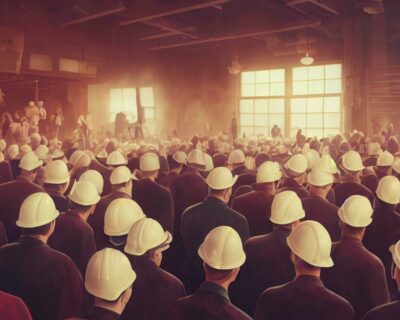
Safety Culture and How You Can Improve Yours!
Everyone reading this knows how vital it is to establish a strong safety culture in your organization, especially in heavy industries like mining, energy, and construction, yet some businesses have yet to get the message. Thankfully, over the last few decades, an increasing number of businesses have begun to see workplace safety as an essential aspect of doing business, like accounting or marketing, rather than a to-do list that needs to be checked off.
In the US, workplace accident rates have been decreasing steadily since 1970, when the Occupational Health and Safety Act was enacted. According to OSHA, workplace fatalities in the US have decreased from 38 per day in 1970, to 15 per day in 2019. This represents a drop of over 60%. Workplace injuries and illnesses have dropped from 10.9 per 100 workers (1972) to 2.8 per 100 workers (2019).
Unfortunately, many companies struggle to achieve a safety culture in spite of the potential benefits. Here we will discuss four effective ways to create a safer workplace.
1) Involve Employees
The safety department cannot be everywhere at once, which means it’s up to employees and managers to get involved and help improve workplace safety. When there is a safety culture in place, employees know they can lead when the circumstance calls for it. They know how to recognize and avoid dangers, and they have the authority to make their own judgments and discontinue any behaviors that aren’t safe.
Employee engagement and communication are interrelated. Employees will feel more comfortable recommending improvements to your safety program if you make it a priority to report and discuss any safety issues.
2) Provide Training

I’m sure we’ve all sat through low-quality (and occasionally hilarious) safety training and disregarded its value at some point in our lives, however, safety training is critical for developing a strong safety culture. Maintaining a positive attitude toward the safety program is beneficial, but it isn’t enough; your staff must also have the necessary information and abilities to be safe. Employees should have basic knowledge, such as danger assessment and basic PPE, independent of their industry. Employees must, however, know how to correctly utilize tools and heavy equipment. Compliance also includes training because, depending on the profession and industry, some courses may be required by local rules.
When you have a dependable and simple-to-use Learning Management System, safety training becomes considerably easier. You may develop tailored training programs for each job position using an LMS, while also keeping track of progress and identifying areas for improvement.
3) Communication
Communication is essential in any business, but it’s more important when it comes to safety! There’s a simple reason for this: you can only tackle safety problems if you’re aware of them. Unfortunately, many minor events and near misses go unreported, and underlying issues aren’t addressed until a major catastrophe occurs.
Companies must ensure that their safety initiatives focus on finding solutions rather than identifying who is to blame. There is an incentive to hide accidents rather than reporting them if a corporation primarily focuses on keeping incident numbers low and employees are considered totally liable.
Toolbox talks are an excellent approach to get employees involved in your safety culture and offer them a chance to bring up safety concerns. Furthermore, when supervisors and safety managers talk about safety all the time, they set the tone for everyone else – safety should be a priority.
4) Lead By Example
When it comes to improving a company’s safety culture, top-down leadership is critical. When the CEO and other senior executives emphasize workplace safety, they set the tone, and it has a ripple effect throughout the organization. Regardless of how brief the visit to a factory floor or project site, management should wear the mandatory PPE. If you don’t, you’re sending the message that safety comes second!
People like Darryl Philbin from “The Office” are needed in your organization. Sure, he may come across as a knucklehead, but he commands the respect of his coworkers and has repeatedly demonstrated that he is concerned about their safety. You must identify the people in your organization who others respect and look up to, and ensure that these individuals are also leading by example.
Conclusion
Since the first safety laws were introduced and enacted in the US, there has been a significant decrease in workplace accidents. Many businesses, however, still regard safety as a need rather than something that may benefit them in a variety of ways. For everyone taking an active role in accident prevention, communication and employee involvement are critical. You must also provide enough training to ensure that your personnel has the necessary skills and knowledge to stay safe. Getting buy-in from the top down encourages employees to follow the rules and leadership to lead by example. Creating a safety culture in your company is critical to keeping people safe on the job and fostering a positive work environment.


























